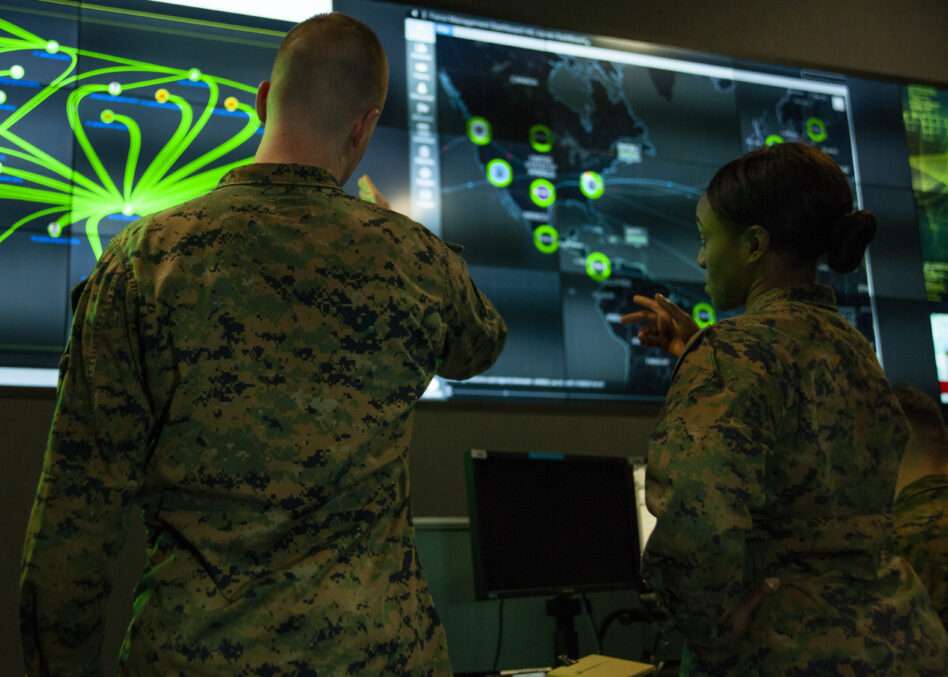Palantir can’t be stopped. On Wednesday, the defense and intelligence software giant with a $395B market cap won a contract to provide “all Marines—from tactical units within the Fleet Marine Force (FMF) to the Supporting Establishment—with access to [Palantir’s Maven Smart System],” the Marine Corps announced.
Add this to the company’s $10B Army contract, and it doesn’t seem like CEO Alex Karp will have to drop “light fentanyl-laced urine” from a drone on his short-sellers anytime soon.
Dolla dolla bills: The Marine Corps partnered with the DIU, the DoD Chief Digital and Artificial Intelligence Officer (CDAO), and the Army Research Lab on the Palantir contract, the dollar value of which was not disclosed. But based on Palantir’s latest contract wins for Maven, you can expect the dollar figure for this one to be pretty eye-watering.
- Last May, the company won a $480M Army contract for the Maven Smart System (MSS)
- Last September, DEVCOM Army Research Laboratory (ARL) shelled out another $99.8M to spread Maven out across the military services.
- In May, the DoD raised the ceiling on its contract for the software by almost $800M.
- NATO also acquired MSS in April. The figure wasn’t revealed, but it was viewed as one of Palantir’s biggest defense contracts this year (which is saying something).
Maven madness: The MSS software that the DoD is so hot on is one of Palantir’s most advanced AI-enabled systems designed for military and defense use. Palantir sparks a lot of mystique, but here’s what the tech does:
- Aggregates diverse data streams, including satellite imagery, drone feeds, radar, communications metadata, geolocation data, and more.
- Machine learning (ML) can identify points of interest, from military vehicles to patterns of activity, allowing a few dozen soldiers to do the boring battlefield data analysis that hundreds or thousands used to do in ages past (like 15 years ago).
- Presents fused data and ML outputs to commanders and analysts on a straightforward user interface that supports the visualization of targeting options, logistics, personnel locations, and a whole lot more.
Given that the software has sold like hotcakes, the Marines are pretty pumped to get their hands on more of it, too. As the Marine Corps said in a statement, MSS “enables rapid sensor-to-shooter engagements through a fully digital workflow, leveraging automation and AI-driven tools for advanced target management.”
“As part of Force Design, we’ve made a deliberate effort to support maritime domain awareness and joint fires integration,” Gen. Eric Smith, the Commandant of the Marine Corps, said in a statement. “This capability enhances intelligence, targeting, and battlespace awareness to aid in faster decision-making, allowing us to sense and make sense more quickly.”
Speedy quick: The contract is part of the DoD’s broader push for the Combined Joint-All Domain Command and Control (CJADC2) warfighting system, and the Corps moved lightning fast to snap this up. According to the service, the contract process took less than five months of receiving a request from the Fleet Marine Force (FMF), which was hurried along by the CDAO and DIU.
“The Marine Corps is at the forefront of adopting technologies that make our Marines more agile, adaptable, and responsive to any threat,” the USMC’s Deputy Commandant for Information, Lt. Gen. Jerry Carter, said. “We continue to look for opportunities to leverage AI and other emerging capabilities at speed and scale.”
If those other emerging capabilities are sold by a certain spectacled and frazzle-haired CEO, Palantir’s 122% stock price jump this year and mind-boggling valuation might actually be fair.

